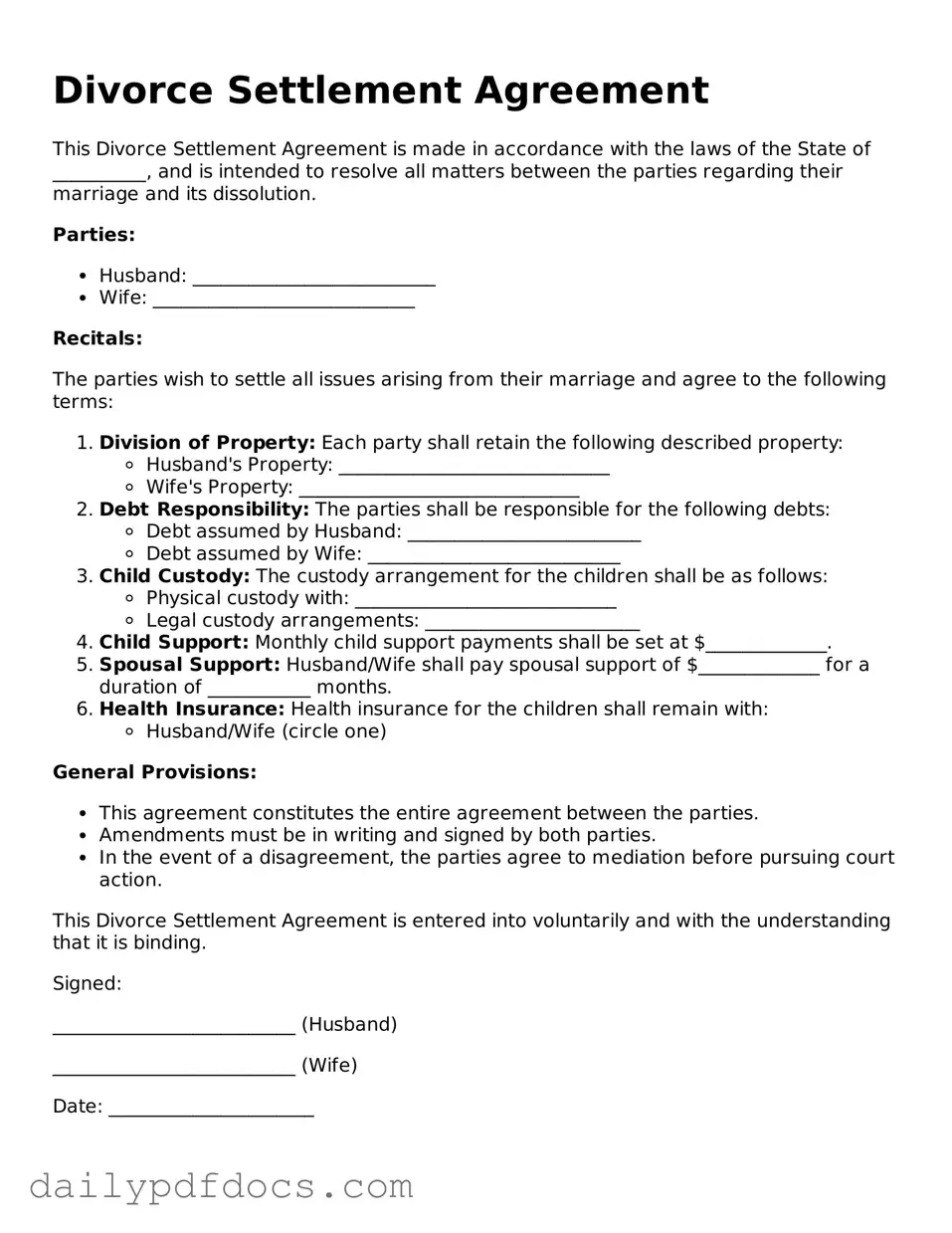What is a Divorce Settlement Agreement?
A Divorce Settlement Agreement is a legal document that outlines the terms and conditions agreed upon by both parties during a divorce. It typically includes details about property division, child custody, child support, and spousal support. This agreement serves as a roadmap for both parties, ensuring clarity and mutual understanding of their obligations and rights after the divorce is finalized.
Why is a Divorce Settlement Agreement important?
This agreement is crucial because it helps prevent future disputes. By clearly outlining the responsibilities of each party, it minimizes misunderstandings and provides a legal framework for enforcing the terms. Courts often require a Divorce Settlement Agreement to finalize the divorce, making it a vital part of the process.
How do I create a Divorce Settlement Agreement?
Creating a Divorce Settlement Agreement typically involves negotiation between both parties. It’s advisable to start by discussing your priorities and concerns openly. You can draft the agreement yourself or seek help from a mediator or attorney. Once both parties agree on the terms, it should be put in writing and signed by both individuals. Legal advice can ensure that the agreement complies with state laws and adequately protects your interests.
Can I modify a Divorce Settlement Agreement after it is signed?
Yes, a Divorce Settlement Agreement can be modified, but only under certain circumstances. Both parties must agree to the changes, and the modifications should be documented in writing. If the changes affect child custody or support, the court may need to approve the modifications to ensure they are in the best interest of the child.
What happens if one party does not follow the Divorce Settlement Agreement?
If one party fails to adhere to the terms of the agreement, the other party has legal options. They can seek enforcement through the court system. The court may order compliance, award damages, or even impose penalties on the non-compliant party. It’s essential to keep records of any violations to support your case.
Is a Divorce Settlement Agreement legally binding?
Yes, once signed by both parties and approved by the court, a Divorce Settlement Agreement is legally binding. This means that both parties are obligated to follow the terms outlined in the document. If one party fails to comply, the other can take legal action to enforce the agreement.
Do I need a lawyer to create a Divorce Settlement Agreement?
While it’s not mandatory to hire a lawyer to create a Divorce Settlement Agreement, it is highly recommended. A lawyer can provide valuable guidance, ensure that your rights are protected, and help navigate complex issues such as property division and child custody. If both parties agree to the terms, they can still benefit from legal advice to avoid potential pitfalls.
